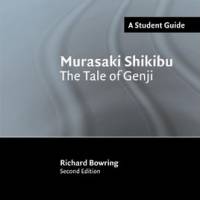Dennis Washburn's new translation of "The Tale of Genji" brings the total number of English options to four and a half, but the novel remains as daunting as ever. How do you approach a 1,000-page novel from 1,000 years ago, in which most of the characters don't even have proper names? The book's insight into the human condition may be timeless, but the mores of Heian Period (794 to 1185) court society can be baffling to modern readers.
Murasaki Shikibu: The Tale of Genji, by Richard Bowring
122 pages
Cambridge University Press, Nonfiction.
Richard Bowring's agreeably concise "Murasaki Shikibu: The Tale of Genji" aims to help with not only understanding but also enjoyment. Instead of simply offering lists and tables of reference material, Bowring explores the whys of the story itself: why handwritten notes were important, why it matters which quarter of the compass characters lived in and so on. His synopsis of the tale includes insightful criticism of each major section and the narrative arc as a whole, arguing for a reading in which Buddhist themes are gradually revealed as the consequences of Genji's youthful excesses unfold.
The later chapters of the book give an account of the original linguistic context of the tale that is refreshingly free of hand-waving mysticism, and a quick tour through the work's reception over the centuries.
Although intended for students, Bowring's book is a worthy option for any reader looking to hit "The Tale of Genji" running.
Read archived reviews of Japanese classics at jtimes.jp/essential.



